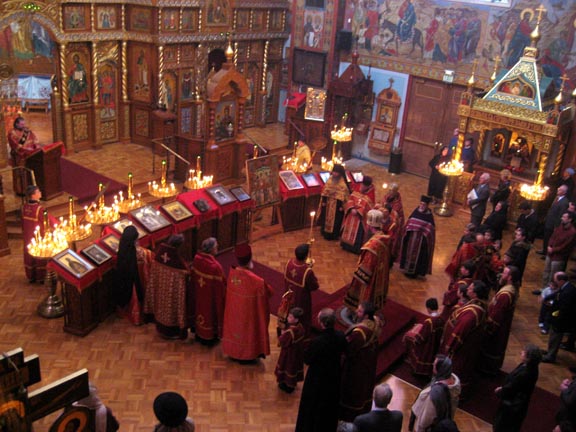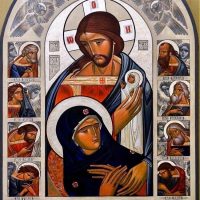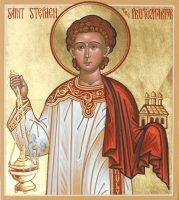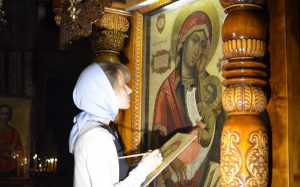One of the first things people notice when visiting an Orthodox church is that nearly every inch of the walls and ceiling are adorned with images of Christ, his mother and the saints.
These pictures are called icons (Greek for “images”), and they tend to provoke a strong reaction, positive or negative.
One is blown away by the beauty, another freaked out by the apparent violation of the biblical injunction against graven images. How you respond to icons says a lot about who you believe Jesus Christ is, and whether you think the incarnation changed God’s relationship with creation.
Let’s tackle the commandment against idolatry (Exodus 20:3-5). It should come as no surprise that the early Christians who began making icons were familiar with this passage, yet they interpreted it within a broader context than the law of Moses.
They understood that any attempt to depict God in Moses’ days was impossible, since God hadn’t yet been seen. Any image one might make (such as a golden calf) would be so remote from the actual reality of God that it would create an artificial being beside him.
At the same time, these Christians believed God overcame the barrier of his transcendence when he made himself visible and tactile. The one who spoke from the heavens began speaking as a man on earth. Jesus, they believed, was the perfect icon (image) of the Father. One who saw him saw God, and not simply the outer shell of an invisible deity.
God’s son became flesh, revealing God to his creatures, and making God the first iconographer. This teaching that the word became flesh was repulsive not only to many Jews, but to the Greek society around them, which considered the body/material existence base and worthless, and only the soul/immaterial realm as having any value.
That the son of God voluntarily entered creation — not only dying on the cross, but rising in the flesh and not as a ghost — led Christians to conclude he’d come to save souls and bodies, to redeem matter itself. If God truly became flesh, matter matters.
Textbooks describe icons as the “gospel for the illiterate” — visual illustrations of scripture for those incapable of reading it — but even this pragmatic justification reduces them to mere visual aids, allowed as dispensation to the weak.
Orthodox believe icons are more than merely permissible. They’re necessary. If a picture is worth a thousand words, one icon says all that need be said about the incarnation.
There was a time when these implications of the incarnation were mitigated, and the role of Christ’s physical nature in sanctifying creation was suppressed.
From the eighth to ninth centuries, the Roman Empire experienced an outbreak of “iconoclasm” (icon smashing). Icons were illegal. The state pursued their destruction. Iconoclasm was based more on Old Testament literalism and Greek philosophy than on the messy notion of God becoming man.
In barren, white-washed churches, iconoclasts preached a faith confined to the intellect, worshipping a God who was more idea than person, his body a mere vehicle for the deity hidden within. In some ways, the iconoclasts anticipated dry, rationalized, post-Enlightenment Christianity.
On the first Sunday of Lent in 843, icons were restored and iconoclasm ended.
Orthodox celebrate this event annually. We carry favorite icons in procession around our temples at the end of Divine Liturgy. This isn’t a matter of mere art appreciation, but a claim that God became man to restore from within us the image and likeness of himself.
We don’t merely venerate icons. We hope to become them.




















